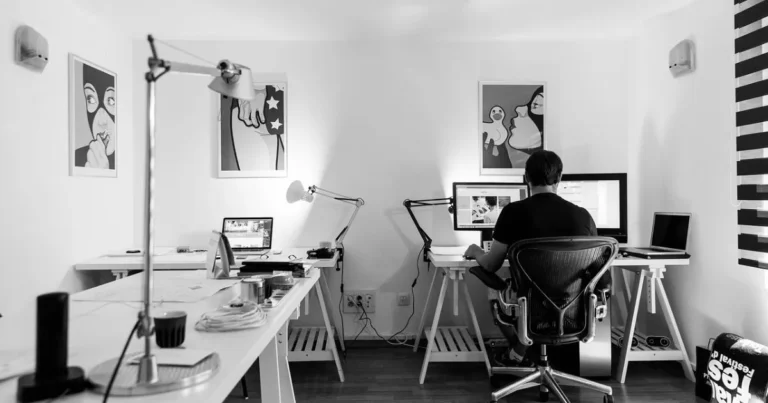10 Practical Tips to Work at Home and Actually Get Things Done
Staying productive in a home environment takes discipline, smart habits, and the right strategies. Whether you’re a remote employee, freelancer, or running your own business, these 10 practical tips to work at home and actually get things done will help you stay focused, efficient, and motivated.
1. Designate a Dedicated Workspace
Your environment plays a huge role in how well you work. If you’re constantly shifting between the couch, kitchen table, and bed, your brain never fully shifts into “work mode.”
How to Create an Effective Workspace
- Choose a quiet, distraction-free zone – Even a small corner with a desk can make a difference.
- Invest in ergonomic furniture – A supportive chair and proper desk height prevent back pain and fatigue.
- Keep it organized – Clutter leads to mental clutter. Store only work-related items in this space.
Studies show that people who work in a designated home office are 15% more productive than those who don’t. If space is tight, try a foldable desk or a “mobile office” setup with a laptop stand.
2. Stick to a Consistent Routine
Without a commute or office hours, it’s easy to fall into an unstructured day—waking up late, working odd hours, and struggling to separate work from personal time.
How to Build a Productive Daily Routine
- Wake up at the same time every day – Your body thrives on consistency.
- Follow the Pomodoro Technique – Work for 25 minutes, then take a 5-minute break. Repeat.
- Set a firm “end of work” time – Just because you’re home doesn’t mean you should work 24/7.
A solid routine trains your brain to know when it’s time to focus and when it’s time to relax.
3. Dress for Success (Even at Home)
You might love working in sweatpants, but research suggests that what you wear impacts your mindset. A study from Columbia University found that people who dressed more formally performed better on cognitive tasks.
Quick Tips for Work-From-Home Attire
- Avoid pajamas – Swap them for casual but put-together outfits.
- Follow a simple morning routine – Shower, brush your teeth, and “commute” (even if it’s just a walk around the block).
You don’t need a full suit—just enough to signal to your brain that it’s work time.
4. Use Time-Blocking for Maximum Efficiency
Multitasking is a myth. Studies show that switching between tasks can reduce productivity by up to 40%. Instead, try time-blocking—assigning specific chunks of time to different tasks.
Example of a Time-Blocked Schedule
| Time Slot | Task |
|---|---|
| 8:00-10:00 AM | Deep work (no distractions) |
| 10:00-10:15 AM | Break (stretch, hydrate) |
| 10:15-12:00 PM | Meetings & emails |
| 12:00-1:00 PM | Lunch (away from screens) |
This method keeps you focused and prevents work from bleeding into personal time.
5. Minimize Digital Distractions
Notifications, social media, and endless browser tabs are productivity killers. The average person checks their phone 96 times a day—that’s once every 10 minutes!
How to Stay Focused Online
- Use website blockers (Freedom, Cold Turkey) to restrict distracting sites.
- Turn off non-essential notifications – Silence Slack, email, and social media alerts.
- Schedule email checks – Instead of constant inbox refreshing, check emails 2-3 times a day.
6. Prioritize Tasks with the Eisenhower Matrix
Not all tasks are equally important. The Eisenhower Matrix helps you focus on what truly matters by categorizing tasks into four quadrants:
| Urgent & Important | Important, Not Urgent |
|---|---|
| Deadline projects | Long-term planning |
| Client emergencies | Skill development |
Eliminate or delegate tasks that are neither urgent nor important.
7. Stay Active to Boost Productivity
Sitting for long periods slows your brain and body. Research from the Mayo Clinic shows that movement improves focus and energy levels.
Easy Ways to Stay Active at Home
- Take a 5-minute walk every hour – Set a timer as a reminder.
- Do desk stretches – Shoulder rolls, neck stretches, and seated leg lifts.
- Try a standing desk – Alternating between sitting and standing improves circulation.
8. Communicate Clearly with Your Team
Remote work requires overcommunication to avoid misunderstandings.
Best Practices for Remote Communication
- Use async tools (Loom, Slack) for updates that don’t need instant replies.
- Set response time expectations – Example: “I’ll reply to non-urgent messages within 24 hours.”
- Schedule regular check-ins – Weekly video calls keep everyone aligned.
9. Batch Similar Tasks Together
Switching between different types of work (writing, emails, calls) drains mental energy. Task batching groups similar activities together for better efficiency.
Example of Task Batching
- Morning (high energy): Creative work (writing, design, strategy).
- Afternoon (lower energy): Administrative tasks (emails, invoicing).
This reduces mental fatigue and helps you dive deeper into each type of work.
10. Reward Yourself for Small Wins
Motivation thrives on positive reinforcement. Celebrating small victories keeps you engaged and productive.
Simple Reward Ideas
- Take a 10-minute break after finishing a big task.
- Enjoy a healthy snack (see table below).
- End the day early if you’ve hit all your goals.
Healthy Snack Ideas for Remote Workers
| Snack | Prep Time | Benefits |
|---|---|---|
| Almonds + Dark Chocolate | 1 min | Energy boost |
| Greek Yogurt + Berries | 2 min | Protein-rich |
Final Thoughts: Make Remote Work Work for You
Working from home doesn’t have to mean sacrificing productivity. By implementing these 10 practical tips, you’ll create structure, eliminate distractions, and stay motivated. Start with one or two strategies today, then gradually add more.
Which tip will you try first? Share your thoughts in the comments below!
FAQ: Your Remote Work Questions Answered
1. How can I stay 100% focused while working from home?
Use time-blocking, eliminate digital distractions, and take regular breaks to recharge.
2. What’s the best way to separate work and personal life at home?
Set physical boundaries (a dedicated workspace) and time boundaries (a strict end-of-day routine).
3. Are there tools to help with remote work productivity?
Yes! Try Trello (task management), RescueTime (track productivity), and Focus@Will (music for concentration).





